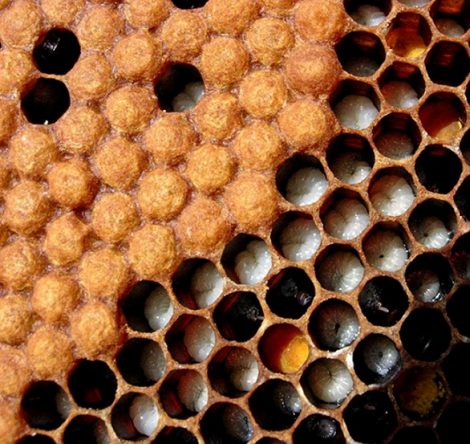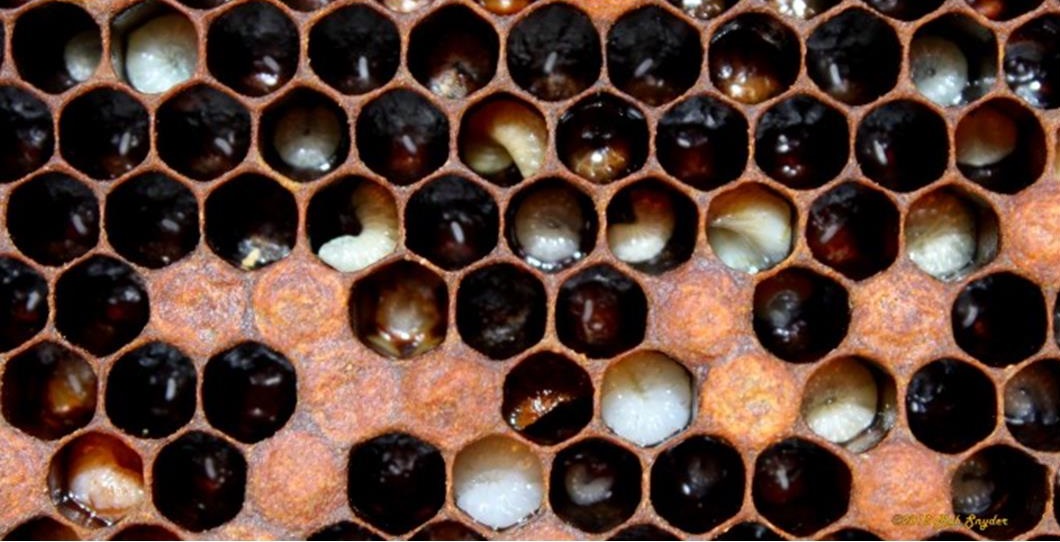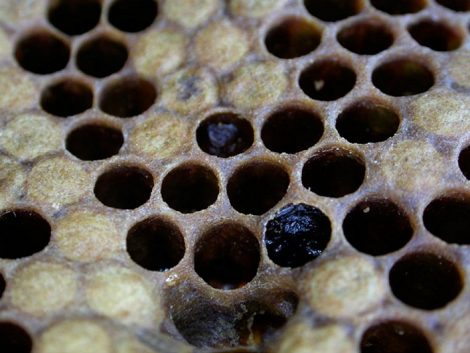 Abraham Lincoln
If given the truth, the people can be depended upon to meet any national crisis...
Abraham Lincoln
If given the truth, the people can be depended upon to meet any national crisis...
 Guildford news...
for Guildford people, brought to you by Guildford reporters - Guildford's own news service
Guildford news...
for Guildford people, brought to you by Guildford reporters - Guildford's own news service
Beekeeper’s Notes May 2016: ‘Darling, I think I’ve Got A Notifiable Disease’
Published on: 1 May, 2016
Updated on: 4 May, 2016
Hugh Coakley, who keeps bees in Worplesdon, talks about having a notifiable disease and what he had to do about his fears.
“Darling, I think I’ve got a notifiable disease” is not the sort of sentence that you want to deliver to your wife at any time. This was no exception.
I had just come back from a hive inspection at the allotment and I felt very low indeed.
I had seen in one of my hives what I thought could potentially be a disease which must be reported to the authorities. Some diseases, once diagnosed, require destruction of the hive and the bees. So, it is a serious issue to face.

Healthy pearly white larvae next to brood which is sealed with wax and waiting to hatch. There is pollen in some cells.
The hive in question was very strong with at least 10 frames of good brood just waiting to hatch into worker bees. I saw several larvae though which didn’t quite look right in my experience.
There appeared to be a spec of black in the centre of the larvae and, while it was the right colour – a pearly white – it did not look to be quite the right shape.

European Foul Brood is evident in some of the larvae in this photograph. Discoloured and twisted larvae within the cell rather than white and curled up is a sign of European Foul Brood, sometimes known as EFB.
I had learnt about European Foul Brood (EFB) and American Foul Brood (AFB) and seen photos. But it is a very different thing if you think it may be in one of your own hives.
So I went home and told my wife, who, as you might expect, was very tolerant of my problem.
“Call the bee inspector” we agreed.

The photograph shows a couple of cells where the wax capping is sunken and discoloured which is a sign of American Foul Brood, sometimes known as AFB. EFB and AFB are both notifiable diseases. They can be spread in many ways including on the beekeeper’s clothing.
Each region in the country has bee inspectors employed by the National Bee Unit. Our region, South East England, has one regional bee inspector supported by four seasonal inspectors and covers a huge area – East Sussex, Greater London, Kent, Surrey and West Sussex.
You will not be surprised to hear that they are very busy.
Bee inspectors are generally local beekeepers themselves so they often know the poor beekeeper that has the worry of a potentially reportable problem.
My inspector was no exception. He was a member of Guildford Beekeepers’ Association and came within a week. To my relief, he gave my hives the all clear.
Very nicely, he reassured me that I had done the right thing. He would rather come out and find no problem that not be called out at all and have disease running rampant through the region.
So, a good ending for me and for the bees as it could have ended in death and disaster for them.

"Found any?" - "Nope, it all looks green to me!" (See Opinion: The Future is Congested, the Future is Grey)
www.abbotshospital.org/news/">





Recent Articles
- Latest Evidence in Sara Sharif Trial
- Ash’s New Road Bridge Is Named – and November 23rd Is Opening Day
- Class A in Underwear Leads to Jail Sentence
- Historical Almshouse Charity Celebrates Guildford in Bloom Victory
- Notice: Shalford Renewable Showcase – November 16
- Firework Fiesta: Guildford Lions Club Announces Extra Attractions
- Come and Meet the Flower Fairies at Watts Gallery
- Updated: Royal Mail Public Counter in Woodbridge Meadows to Close, Says Staff Member
- Letter: New Developments Should Benefit Local People
- Open Letter to Jeremy Hunt, MP: Ash’s Healthcare Concerns


Search in Site
Media Gallery
Dragon Interview: Local Artist Leaves Her Mark At One of England’s Most Historic Buildings
January 21, 2023 / No Comment / Read MoreDragon Interview: Lib Dem Planning Chair: ‘Current Policy Doesn’t Work for Local People’
January 19, 2023 / No Comment / Read MoreA3 Tunnel in Guildford ‘Necessary’ for New Homes, Says Guildford’s MP
January 10, 2023 / No Comment / Read More‘Madness’ for London Road Scheme to Go Ahead Against ‘Huge Opposition’, Says SCC Leader
January 6, 2023 / No Comment / Read MoreCouncillor’s Son Starts Campaign for More Consultation on North Street Plan
December 30, 2022 / No Comment / Read MoreCounty Council Climbs Down Over London Road Works – Further ‘Engagement’ Period Announced
December 14, 2022 / No Comment / Read MoreDragon Interview: GBC Reaction to the Government’s Expected Decision to Relax Housing Targets
December 7, 2022 / No Comment / Read MoreHow Can Our Town Centre Businesses Recover? Watch the Shop Front Debate
May 18, 2020 / No Comment / Read More







Recent Comments